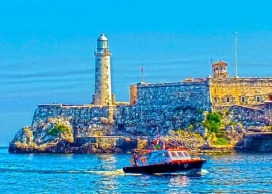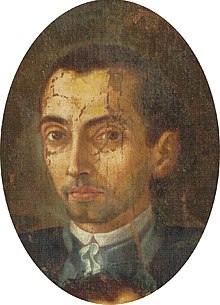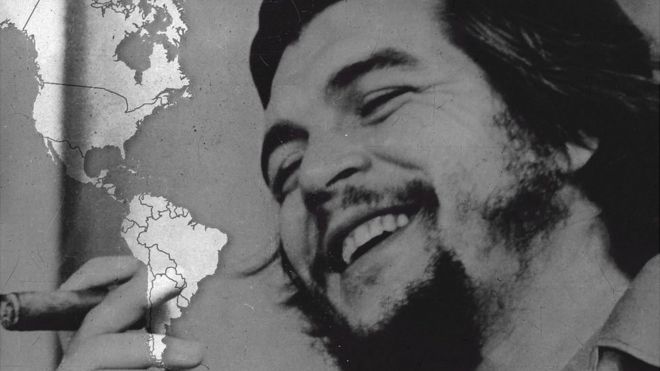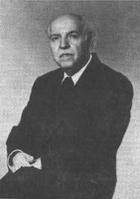
Havana ephemeris. September 8th.
1734. José Nicolás de Escalera is born in Havana.

As an 18th-century painter, he excelled in the genres of religious art and secular portraiture. He was considered the most representative figure of Baroque painting in Cuba.
In Cuba as well as in Spain and the United States more than fifty of his pieces are preserved, signed, documented and attributed. It is considered that the consecration of his work is constituted by the works carried out for the Parish Church of the city of Santa María del Rosario, current municipality of Cotorro in Havana. In the mural paintings, commonly called pendentives, he carried out the marouflage technique, which is used to fix a light surface, paper or canvas, on a more solid and rigid support. He worked on the decoration and painting of the 9 altarpieces that are still preserved in said parish today, some of them signed by him.
His death occurred in Havana on July 3, 1804.
1899. The General League of Cuban Workers is founded in Havana. (LGTC)

It was the most important, organized and broad labor organization of the labor movement in that final stage of the 19th century.
Its main objective was to unite the action of the unions, workers' circles and other workers' centers in favor of economic and social demands, particularly for the native worker, as well as raising the level of organization of the national proletariat. They claimed for many injustices among which are located: the working day of much more than 8 hours and wages in tokens or vouchers as payments and demanded wages in money or currency. He also condemned the discrimination of Cubans to obtain jobs.
The League played a vital role in organizing the proletariat and leading its first strikes.
The most important and systematic of all their demands was the demand that Cuban workers enjoy the same rights as foreigners, mainly Spaniards, in the various economic sectors.
1959. After making a three-month tour of countries in Europe, Asia and Africa, Commander Ernesto Che Guevara returns to Havana.

Upon his return, Che comments to the press that the most outstanding thing about that day of good will was to verify the sympathy that the Cuban Revolution arouses in the entire world.
He was received at the José Martí airport by commanders Raúl Castro and Juan Almeida.
1970. The relevant Cuban scientist Dr. Gustavo Adolfo Aldereguía Lima dies in Havana.

He was born on March 22, 1895 in Campechuela, then Oriente province. He graduated as a doctor at the University of Havana. He initiated and spread preventive medicine in all the methods and procedures known to him. As a doctor he fought administrative political corruption, during the authentic governments.
After the triumph of the Revolution in 1959 he is given the responsibility of General Director of the fight against tuberculosis. He assumes the entire process for the study of the disease in the Cuban population, its diagnosis, treatment and eradication. He participated in dissimilar international congresses and was the author of important scientific publications. In relation to social hygiene, which he defines as the equality of classes in relation to health, he anticipates the development of Cuban public health in two of the most important works: "Epidemiology of Tuberculosis" and "Role of the communities in the fight against tuberculosis".
1987. On the initiative of Commander in Chief Fidel Castro, the Computer and Electronics Youth Club is created. That day, with the vision of the future that characterized Fidel, he pointed out: “Young Factory Club, Institutional Youth Club, and Youth Popular Club, because these are the ones who are there alongside the neighbors, this is the family doctor, the the Cuban family.

Its fundamental objective is to familiarize children, young people and all interested persons with new technologies in the field of computing.
The services in Joven Club have a marked social character, directing the use of new technologies to the solution of the most dissimilar demands and problems of Cuban society, playing a stimulating role in the social, cultural and spiritual life of Cubans. Training in topics related to computers, communications and electronics constitutes a fundamental pillar of the work carried out in these facilities.
1960. At the closing of the congress of the National Federation of Shoemakers, the top leader of the Cuban Revolution, Fidel Castro, announces that the country would launch a campaign against illiteracy in the following year. In the final words of his speech, he stated:
“There are many other things that we have to do, and we are going to do them anyway! Despite all the enemies of the Revolution, despite imperialism and despite all the assaults; they will not be able to prevent us from continuing to carry out all these tasks, because it is the work of an entire people and that is why I want to ask here the delegates and the people who have come to the congress if they agree to give them all their support to these projects of the Revolution. So, in a few days it will be necessary to call a plenary session of the unions and the federations of the CTC, to deal with these problems of cultural dissemination in social circles and the fight against illiteracy.”